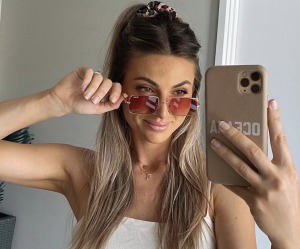Model Reflects on Surprise Melanoma Diagnosis
- Australian model and influencer, Oceana Strachan, was shocked when a small freckle on her ankle turned out to be stage 2 melanoma.
- After having the cancer removed, she’s using her experience to raise awareness about skin checks and using sunscreen.
- Dermatologists recommend performing self skin checks to pick up on anything out of the ordinary every month.
Even though she had the foresight to seek out a biopsy for the freckle, Strachan told Yahoo that she was completely shocked that it turned out to be cancer. Melanoma is the deadliest form of skin cancer. Strachan told the outlet that she thought back to when she was younger and wasn’t vigilant about using SPF to protect her skin from the sun.
Read More
“I had great support from my close friends and family, and have since opened up about my experience on social media,” she said. “I wish I'd opened up sooner, as I've been able to connect with other younger people going through this.”
She now uses her massive platform — she has more than 750,000 followers on Instagram — to push skin cancer awareness and skin safety, particularly making sure her followers are aware that they need to use sunscreen. She also wants to make it clear that she can still enjoy the sun, she just does it in a safe way.
“My feelings towards spending time in the sun after having a melanoma removed has definitely shifted,” she wrote in a recent post. “I'm more aware of applying/reapplying SPF and having a coverup on hand is important to me especially if I can't find shade. But the refreshing sense of a salty swim will never change for me, it's the best!!!!”
Skin Checks for Melanoma are Crucial
Seeing a dermatologist annually for a skin check is crucial to spot skin cancer and to prevent skin cancer from progressing. However, dermatologists also recommend taking a look at your own skin every month and looking for any changes that may indicate something is off.
Dr. Cecilia Larocca explains what to look out for when doing a self skin check
“If you are at high risk for skin cancer, or you have a diagnosis of skin cancer already, we really emphasize the importance of a skin check,” Dr. Cecilia Larocca, a dermatologist in the Centers of Melanoma and Cutaneous Oncology at Dana-Farber Cancer Institute, previously told SurvivorNet.
There are certain things to be aware of when you examine your own skin, Dr. Larocca said, like a mole getting bigger, changing color, or changing shape. She recommends using an acronym, ABCDE, to remember what to look out for on your body.
Here’s a breakdown of what that means:
Asymmetrical moles: if you drew a line straight down the center of the mole, would the sides match?
Borders: irregular, jagged, not smooth moles; can also stand for bleeding
Colors: multiple distinct colors in the mole
Diameter: larger than 6mm, about the size of a pencil head eraser
Evolution: This may be the most important, anything that is changing over time such as gaining color, losing color, painful, itching, hurting, changing shape, etc.
If you pick up on any of these changes to a mole or notice a new one with some suspicious qualities, that would definitely be something to bring up with a dermatologist as soon as possible. A changing mole does not necessarily mean you have melanoma, but a dermatologist will be able to determine if further testing, like a biopsy, is necessary.
Learn more about SurvivorNet's rigorous medical review process.


